Matalo!
1970 / Colour / 90 m. / Italy / Spain
Starring: Corradi Pani, Lou Castel, Antonio Salines, Luis Davila, Claudia Gravy, Ana Maria Noe, Ana Maria Mendoza, Miguel Del Castillo, Diana Sorel, Mirella Pamphili, Joaquin Parra, Bruno Boschetti
Cinematography: Julio Ortas
Production Designers: Francesco De Stefano, Jose Luis Galicia and Jaime Perez Cubero
Film Editor: Antonio Gimeno
Original Music: Mario Migliardi
Written by: Nico Ducci, Eduardo Manzanos Brochero and Mino Roli
Produced by: Eduardo Manzanos Brochero
Directed by: Cesare Canevari
Reviewed by Lee Broughton
Synopsis:
Bart (Corradi Pani) is saved from the hangman’s noose by a gang of hired Mexican bandits but, rather than pay them for a job well done, he shoots them in the back as they head for home. He meets up with his outlaw partners, Phil (Luis Davila) and Ted (Antonio Salines), and the trio relocate to a hideout in a remote ghost town. When the hippie-like gang’s fourth member Mary (Claudia Gravy) shows up with supplies, the quartet begins plotting a brutal army payroll robbery.
The robbery is a success but when the gang return to their hideout they are surprised to discover that the ghost town has a secret resident, Gertrude Benson (Ana Maria Mendoza). When two seriously dehydrated travellers, Ray (Lou Castel) and Bridget (Ana Maria Noe), stagger into the ghost town, the paranoid gang embark upon an orgy of psychological abuse and extreme physical violence. Ray is ready to fight back if he gets the chance but he doesn’t know how to use a gun: his weapon of choice is a bag of boomerangs.
Critique:
Cesare Canevari’s The Nude Princess (1976) is a low budget but stylish and intriguing romp that defies generic classification and the same could be said of Canevari’s Matalo! to some extent. Indeed, Matalo! enjoys a reputation for being one of the most unusual Spaghetti Westerns ever made and it certainly lives up to its reputation.
The film might be better described as being an “Acid” Western but conventions from a whole host of different film genres collide here in a psychedelic maelstrom that utilises filmmaking techniques associated with both art house and popular cinema. As such, Matalo! should be of interest to a quite disparate cross-section of cult cinema fans.
On one level, the film plays like a crazed late-Sixties’-style psychedelic art film. There are some great camera angles and dizziness-inducing camera moves on display here, not to mention some pretty whacked-out editing, camera focus and camera speed tricks too. These arty camera tricks are put to good use during some very effective dream-like montages that feature some impressive slow-motion effects.
Mario Migliardi’s superb soundtrack score heaps further art film oriented gravitas onto the show. Dubbed as ‘special electro-acoustic music effects’ in the film’s credits, a good part of Migliardi’s score is made up of fairly avant-garde and ‘out there’ sounds.
There is effective use of organs, harps, electric guitars, audio-generators, echo chambers, electronically treated moans, groans, whistles and cries, crazy percussion, ethnic beats, amplified/treated natural sounds and so on present here. Some of Migliardi’s more unconventional pieces are a little reminiscent of Basil Kirchin’s experiments with music and found sound.
The remainder of Migliardi’s soundtrack score is largely comprised of some really powerful Acid Rock numbers that feature some magnificent fuzz guitar work and stoner vocals. This side of Migliardi’s music highlights and amplifies one particular aspect of the show’s fractured generic personality: its radical hippie-cum-counter-culture movie vibe.
Elsewhere a brief diversion into Asian sounding music gives one scene the feel of a dialogue free but symbolism laden set piece from a Bollywood romance flick while further cues and musical effects seem intent on imbuing parts of the show with the atmosphere of both a horror film and a thriller.
The surprising appearance of a brief first-person narration near the start of the show allows Corradi Pani’s Bart to impart his twisted personal philosophy on life, society, money and criminality to the viewer. Bart looks like a Peter Stormare bad guy who is going to a fancy dress party as a blonde Sonny Bono circa 1965. He sports a fringed sleeveless duster, a striped headband and bell-bottom trousers that are held up by a belt that features a giant psychedelic butterfly buckle.
Similarly, Claudia Gravy’s cute but psychotic Mary looks like a slender Mariah Carey caught in the grip of a severe Cher fixation. She wears American Indian-inspired outfits, including one that fuses hotpants with some kind of tasselled skirt that does a fine job of not covering her shapely legs.
Antonio Salines’ completely deranged Ted looks like a member of the original Mothers of Invention line-up, particularly when he starts messing around with Mrs Benson’s ransacked dresses. With his fringed jacket and beads, and slightly shorter hair, Luis Davila’s Phil looks like a hippie-fied version of one of Ralph Waite’s Western bad guys.
Ray and Bridget get some noteworthy costumes too. Ray’s unusual jacket features a neat paisley pattern while Bridget sports a fur-trimmed coat that is essentially a psychedelic patchwork job. The introduction of Ray, Bridget and Mrs Benson ultimately sees the film lurching into proto-Seventies’ exploitation cinema territory since the criminal cowboy hippies featured here are a decidedly sadistic bunch.
When the gang discover Mrs Benson’s home, they take great pleasure in wrecking the place and psychologically abusing their terrified host. And when they subsequently get their hands on Ray and Bridget, they delight in putting the pair through all manner of physical abuses and tortures. It’s all pretty disturbing and upsetting stuff, so much so that I wouldn’t be surprised to learn that Matalo! had had some influence on the early exploitation cinema works of Wes Craven and his ilk.
The show’s intermittent horror film vibe is decidedly Euro-horror-like in its execution. The significance of a strange subplot featuring the Widow (Mirella Pamphili), that takes place in the town where Bart was to hang, is never fully explained. A funeral is taking place amidst a welter of Jess Franco-esque out of focus shots but a woman in mourning is preoccupied by the hanging instead. When Bart escapes, she makes to shoot him but winds up kissing him and then lamenting his subsequent departure.
And when Bart and company first approach the ghost town they cut through a cemetery, which allows Canevari’s camera to roam over row after row of tombstones, picking out particular headstones for more detailed exploration. The graveyard set sequences from the cinema of Jean Rollin momentarily come to mind here.
In an unsettling scene in the ghost town itself, a genuine, naturally occurring dust devil actually threatens to morph into a bona-fide spectral shape right in front of the camera! And Canevari even manages to cook up a bizarre little homage to Edgar Allan Poe’s The Pit and the Pendulum (1842) during one of the film’s torture sequences.
Added to this is the fact that the ghost town, at different times, is targeted by two unidentified stalkers who wish to harm the town’s inhabitants. And so we also have the inclusion of a number of effectively played out giallo and thriller genre motifs included here too.
Seen as shadows on walls after dark and half glimpsed shapes in shadowy areas or represented by weapons eerily protruding through open windows or split-second close-ups of their eyes, the stalkers have a penchant for playing spooky tricks on the bad guys, such as setting a child’s squeaking swing in motion after midnight. The stalkers’ actions, when combined with Migliardi’s unsettling music, generate plenty in the way of suspense and tension.
Some sections of the show also possess a crazed sense of over-the-top melodrama and sexual tension that brings to mind the films of Russ Meyer. Bart and Ted both lust after Mary – and it’s indicated that they have both been romantically involved with her in the past – but she’s currently coupled up with Phil.
Like many a Meyer heroine, Mary feeds off Bart and Ted’s open expressions of lust and delights in turning steamy bouts of flirtation into teases and taunts that drive her admirers to distraction. Mary’s propensity for violence would also make her right at home in a Meyer film but it’s her final scenes that really bring Meyer’s filmmaking to mind.
In a mad free-for-all of a finale, most of the film’s interested parties wind up in a crazed circular gunfight in the centre of the ghost town just as a dust storm is starting up. Canevari simply puts his camera on a roundabout in the centre of the action and allows it to spin continuously. The camera’s spinning point of view shot is inter-cut with a number of campily dramatic shots of Mary firing rifle rounds into the chaos of the gunfight while she desperately calls out her lover’s name.
Once the big gunfight is out of the way, it’s time for Ray to do his stuff with the boomerangs. The boomerangs actually work really well and Ray represents another interesting genre character for Lou Castel (Irma Vep [Olivier Assayas, 1996]). The son of a preacher, Ray is a pacifist who doesn’t know how to use a gun and his genuine lack of interest in material goods and money means that the $200,000 worth of stolen military gold that is so coveted by the gang means absolutely nothing to him.
One other aspect of Matalo! that should be noted is the film’s quite low budget. After the extras-packed opening ten minutes, much of the film’s action revolves around the handful of characters stationed at the ghost town location. Two brief excursions from the ghost town set are provided by the army stagecoach robbery and a trip to see Baxter (Miguel Del Castillo), the criminal Mr Big who set the robbery up.
There’s a lot of hand-held camera work here (which is very effective) and a fair amount of the kind of zoom lens work that goes with the territory too. The crazed art film-cum-exploitation movie feel of the bulk of the film is sometimes offset by the occasional sequence that is knowingly blocked and framed in the style of contemporary camp television shows such as Batman (1966-68). Presumably styled to generate the claustrophobic atmosphere of the ghost town, Canevari employs a fair number of quite tight close-ups and tightly framed medium shots throughout the sequences that are set there.
Given the film’s low budget, the quality of the acting in Matalo! is pretty good as are its sets and decor. It remains clear throughout that Canevari and his team were constantly striving to produce something that was both decidedly off-kilter and, in terms of the genre, really quite unique. I would say that they undoubtedly succeeded in their aims. Matalo! is definitely one of those films that helped to make the Spaghetti Western genre such a fascinating and entertaining film form.
Psychotronic Cinemas rating: Good ++ / Very Good
* This review was originally written in 2007 and published at DVDSavant. In 2022, I wrote a chapter about the film entitled ‘Where the classical, the transnational, and the Acid Western meet: Matalo! (Cesare Canevari, 1970), violence, and cultural resistance on the Spaghetti Western frontier.’ The chapter appears in the book Transnationalism and Imperialism: Endurance of the Global Western Film.
© Copyright 2007, 2022, 2023 Lee Broughton.
HOME | REVIEWS: A-Z | FURTHER READING | NEWS | ABOUT
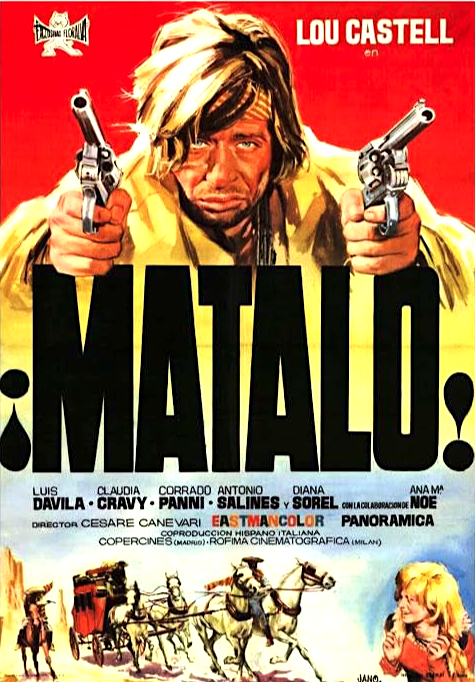
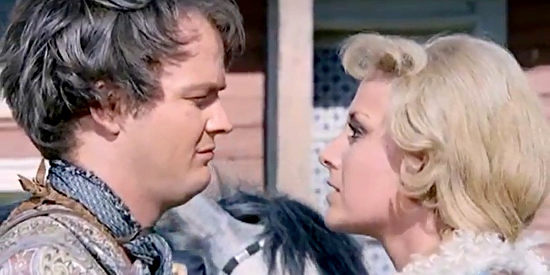
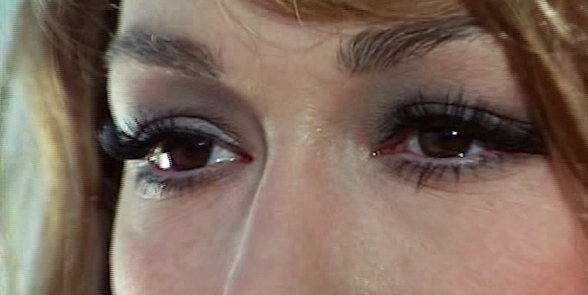
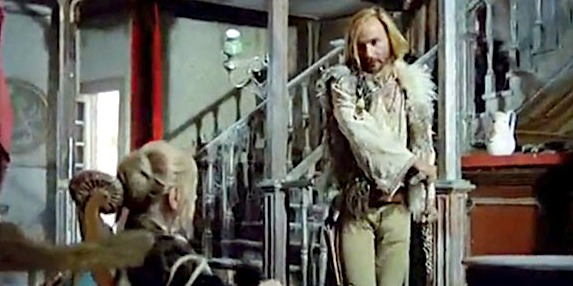
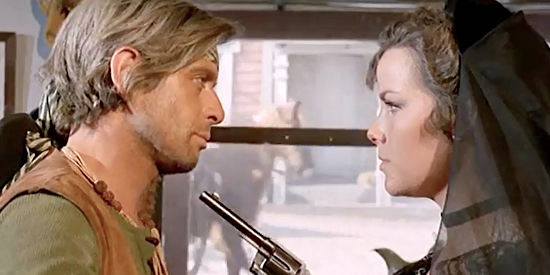
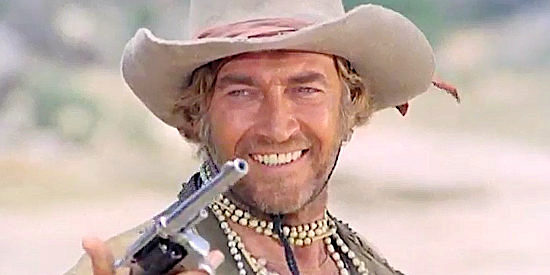
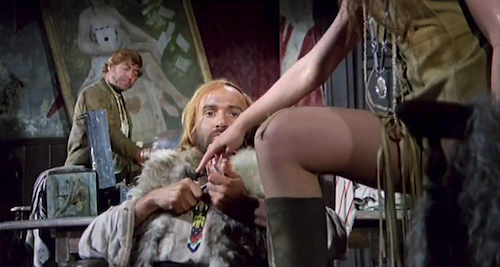
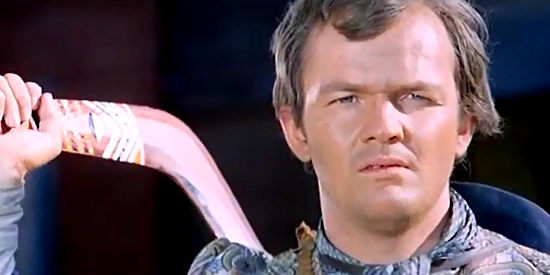
You must be logged in to post a comment.